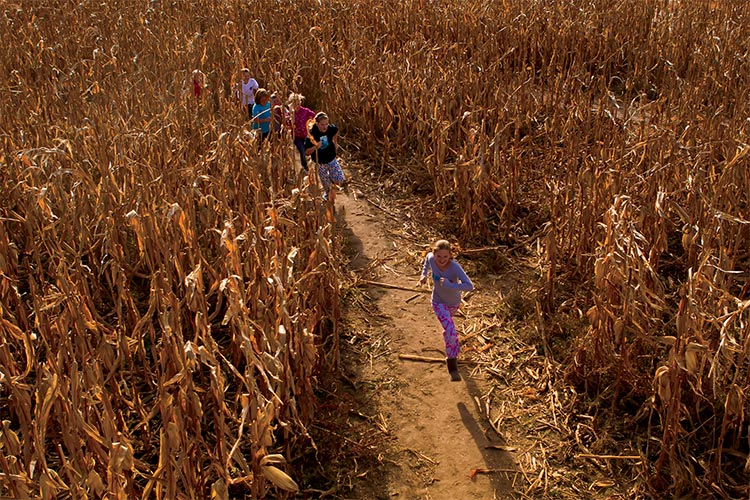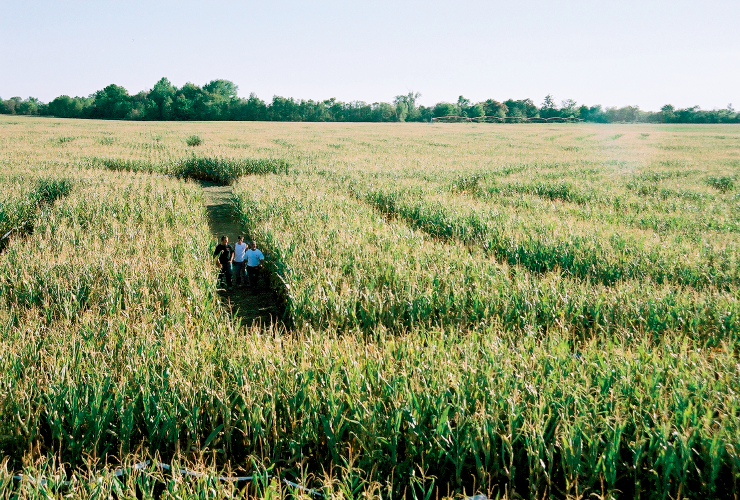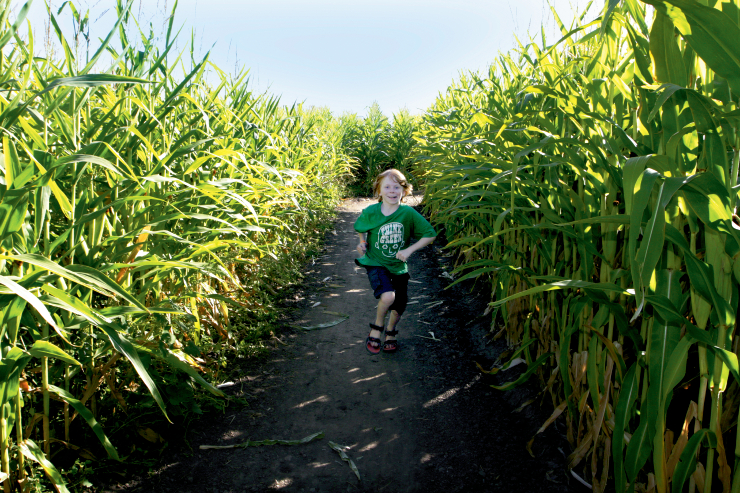Home > Indiana > Indiana Agritourism > Corn Mazes Use Technology Smarts to Educate and Amaze Visitors
Corn Mazes Use Technology Smarts to Educate and Amaze Visitors
In partnership with: Indiana State Department of Agriculture

If you’ve ever visited a corn maze, you know the stalks are tall, the paths can be tricky and sometimes you may wonder if you’ll ever find your way out. But did you know these labyrinths are also a lesson in today’s technology-savvy agriculture?
Corn mazes, a prime example of an agritourism enterprise, typically help to supplement family farm income. Most production farms stay busy year round, focusing on growing traditional grains such as corn, soybeans and wheat, and raising some livestock. The intricately designed corn mazes, often combined with pick-your-own produce or on-site markets, serve as a fun activity to draw tourists out of the city limits and onto the farm.
Corn maze development takes long hours of precision planning, whether designed with traditional graphed-out methods or by using GPS (global positioning systems).

Traditional Maize Graphing
For the graphing method, the first step is creating and sketching out a design on a piece of grid paper. Before planting, the maze is physically measured and marked in the cornfield. The corn is then planted. Once the corn is up several inches to a foot tall, a mower or similar device is driven through the field, cutting off the corn according to the marked design. While the majority of the field’s corn continues to grow normally, mowing may be done several times before the maze’s desired effect is achieved.
Companies such as Utah-based The MAiZE Co. work with farmers across the country to design their mazes, teach them how to cut the corn and also handle marketing.

GPS-Designed Mazes
Tracy Roberts, an Indiana corn maze designer, also starts by creating a design on a piece of grid paper. However, GPS technology and software facilitate the design being geo-referenced into an architectural computer-aided design program. The agreed-upon design appears on her computer screen with a dot telling her where she’s located when standing in the field. Driving around the field and following the computer screen designates where the design paths should be.
“It’s kind of like creating a connect-the-dots picture in a corn field,” Roberts says.
She notes that the field is planted north-south and east-west, usually at the end of May or June. “Over the next few months, a lawnmower is used to cut the paths to achieve the final product,” she says.
Most corn mazes open to the public in mid-September, and many incorporate quizzes and trivia games to help visitors find their path to the end – and learn a little something along the way.



